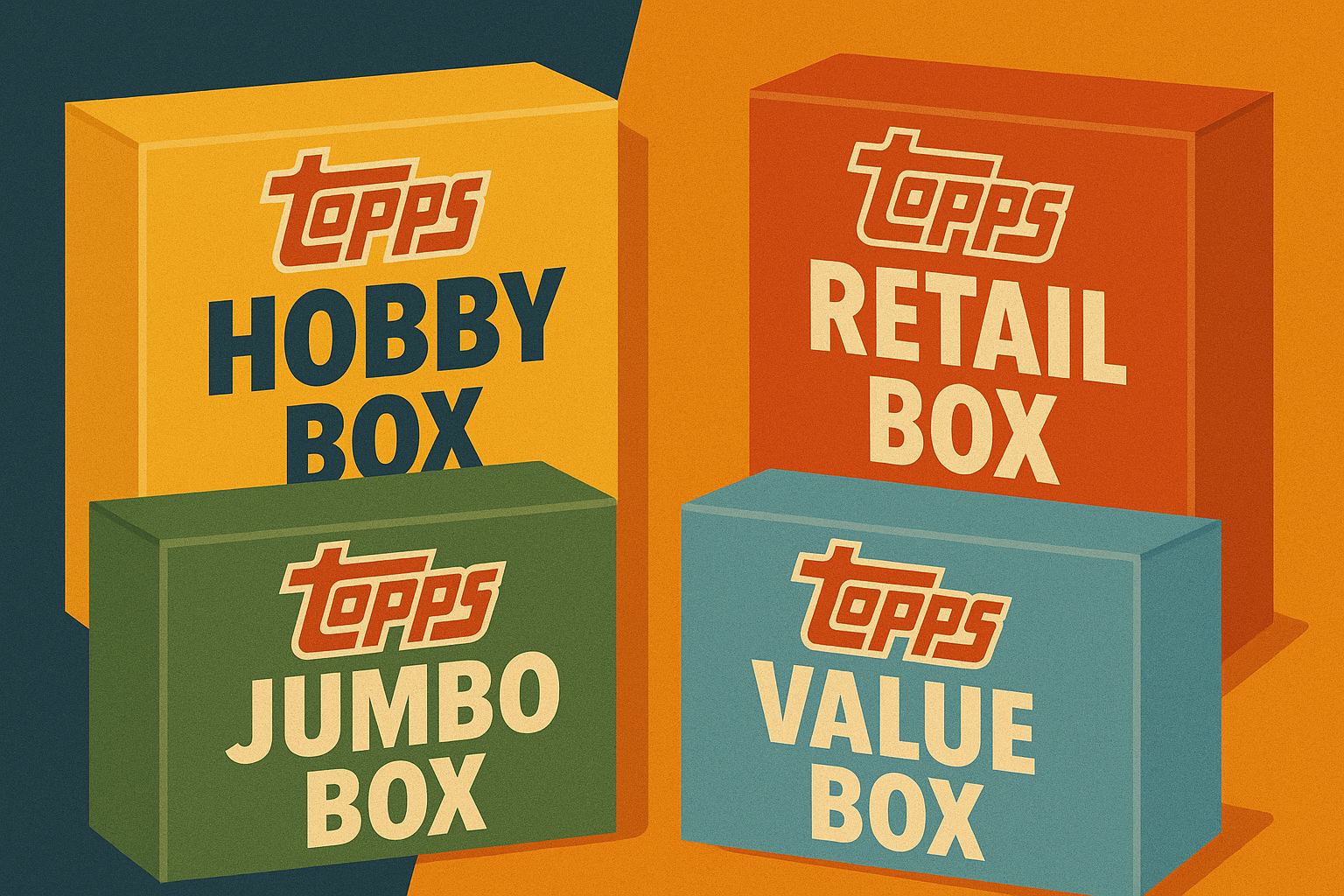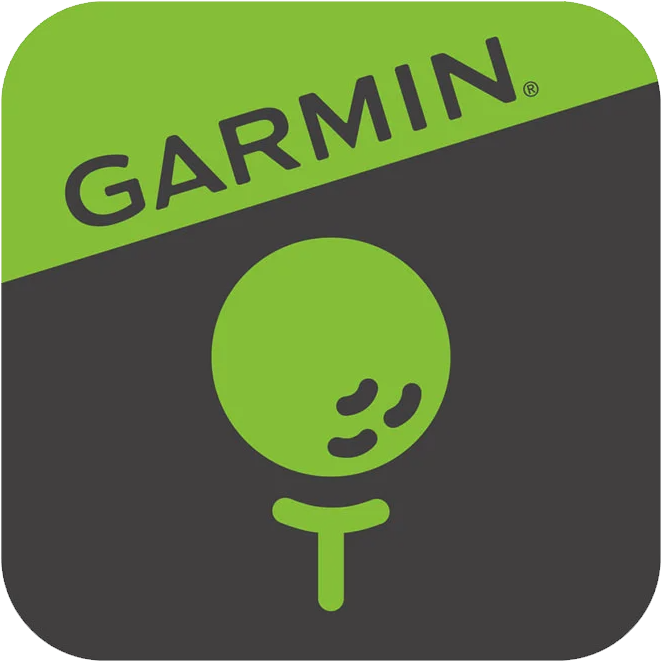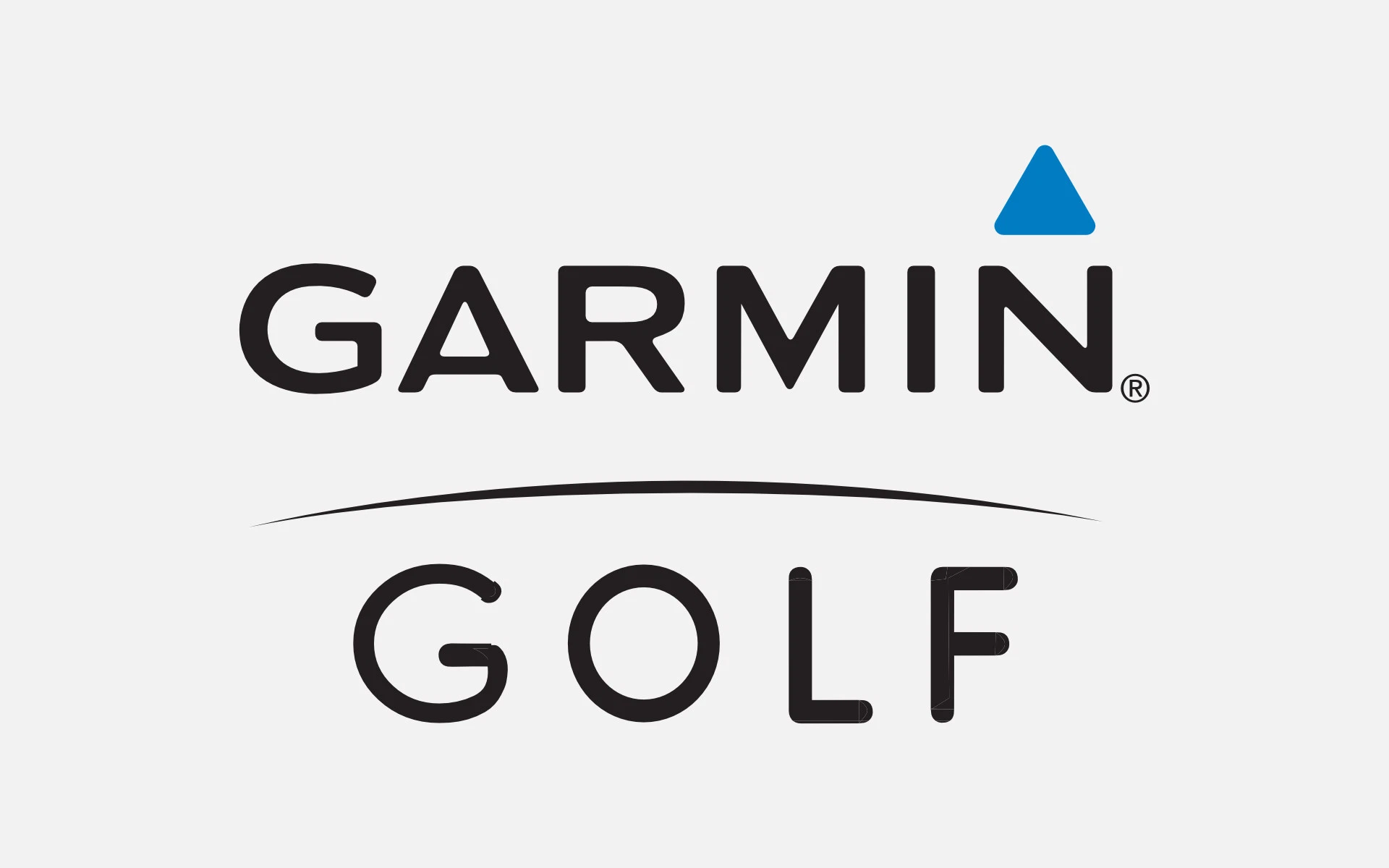If you’ve ever stood in the trading card aisle at Target or scrolled through an online card shop, you’ve probably felt overwhelmed by the variety of box types available. Jumbo boxes, hobby boxes, blaster boxes—what’s the difference, and more importantly, which one should you buy? Today, we’re breaking down the complete Topps product hierarchy to help you make informed decisions and maximize your collecting experience.
The Evolution of Card Distribution
Before diving into specific box types, it’s important to understand how the trading card industry has evolved. In the 1980s and early 1990s, you could buy packs at any corner store, and they were all essentially the same. Today’s market is far more segmented, with different products targeting different types of collectors and budgets.
This segmentation serves multiple purposes:
- Price discrimination: Different products at different price points capture more of the market
- Exclusive content: Special inserts and parallels create chase elements
- Channel protection: Hobby shops get exclusive products to compete with big box retailers
- Collector engagement: Various formats keep the hobby fresh and exciting
Understanding the Hierarchy
Let’s break down each product type from most premium to most accessible:
1. Jumbo Boxes: The Premium Experience
What is it? Jumbo boxes are the cream of the crop in the Topps lineup. These boxes contain fewer packs than hobby boxes but each pack is loaded with significantly more cards.
Specifications:
- Packs per box: Usually 8-10
- Cards per pack: 40-50 (varies by product)
- Total cards: 320-500 per box
- Price range: $150-$500+ depending on product
- Availability: Hobby shops and online only
- Case size: Typically 6-8 boxes per case
What Makes Them Special:
Guaranteed Hits: Jumbo boxes typically guarantee the most autographs and memorabilia cards per box. For example, 2024 Topps Series 1 Jumbo boxes guarantee:
- 2 autographs
- 2 memorabilia cards
- Multiple numbered parallels
Exclusive Inserts: Many products include jumbo-exclusive insert sets or parallels you can’t find in other formats.
Better Odds: The ratios for pulling rare cards are generally better in jumbo boxes. If a particular insert falls 1:100 packs in hobby, it might be 1:75 in jumbo.
Who Should Buy Jumbo:
- High-end collectors seeking the best odds at premium cards
- Case breakers who need maximum yield for group breaks
- Investors looking for the highest potential ROI
- Completists trying to build master sets
Pros:
- Best odds for hits and rare cards
- Exclusive content
- Fewer packs to open (less time investment)
- Most likely to contain case hits
Cons:
- Highest price point
- Risk/reward is amplified
- Not widely available
- Can be overwhelming for new collectors
2. Hobby Boxes: The Collector’s Standard
What is it? Hobby boxes are the traditional backbone of the collecting world. These are what you’ll find at your local card shop (LCS) and what most serious collectors consider the “standard” product.
Specifications:
- Packs per box: Usually 24-36
- Cards per pack: 8-14 (varies by product)
- Total cards: 200-400 per box
- Price range: $70-$250 depending on product
- Availability: Hobby shops and online only
- Case size: Typically 12-16 boxes per case
What Makes Them Special:
Hobby-Exclusive Cards: Most Topps products include parallels, inserts, or autograph sets that can ONLY be found in hobby boxes. These might include:
- Hobby-exclusive parallel colors
- Special numbered cards
- Exclusive autograph checklists
Guaranteed Content: While not as loaded as jumbo boxes, hobby boxes still guarantee certain hits:
- Usually 1-2 autographs or memorabilia cards
- Set number of inserts and parallels
Traditional Experience: Opening a hobby box provides the classic pack-ripping experience that many collectors love.
Who Should Buy Hobby:
- Serious collectors building sets or PC (personal collection)
- Local card shop supporters
- Collectors seeking exclusive content
- Those wanting guaranteed hits without jumbo prices
Pros:
- Good balance of price and content
- Widely available at LCS
- Hobby-exclusive cards
- Consistent configuration
- Strong secondary market
Cons:
- More expensive than retail
- Requires finding a local shop or buying online
- No instant gratification (can’t grab at Target)
3. Retail 24-Pack Boxes: The Compromise
What is it? These boxes look similar to hobby boxes but are designed for mass retail. They’re often found at big box stores during the initial release period.
Specifications:
- Packs per box: 24
- Cards per pack: Usually same as hobby
- Total cards: Similar count to hobby
- Price range: $40-$100
- Availability: Walmart, Target, Meijer (when in stock)
- Case size: Varies
What Makes Them Special:
Retail-Exclusive Parallels: Some products include retail-only parallel colors or insert sets.
Price Point: Generally 30-40% cheaper than hobby boxes.
Accessibility: No need to find a card shop—just head to Target (if you can beat the flippers).
Who Should Buy Retail 24-Pack:
- Budget-conscious collectors
- Set builders who don’t need hobby exclusives
- Casual collectors who want a box experience
- New collectors testing the waters
Pros:
- More affordable than hobby
- Sometimes available at retail stores
- Decent pack count
- Can contain retail-exclusive cards
Cons:
- No guaranteed hits
- Missing hobby-exclusive content
- Often cleaned out by resellers
- Less prestigious in the collecting community
4. Blaster Boxes: The Gateway Product
What is it? Blaster boxes are the most common sealed product you’ll find at retail stores. They’re designed to be an affordable entry point into the hobby.
Specifications:
- Packs per box: 6-8 typically
- Cards per pack: 5-8
- Total cards: 30-100 per box
- Price range: $20-$40
- Availability: Wide retail distribution
- Special features: Often include exclusive packs or inserts
What Makes Them Special:
Exclusive Content: Many blaster boxes include:
- Commemorative patches or medallions
- Exclusive parallel colors (like Walmart Blue or Target Red)
- Special insert packs unique to blasters
Price Point: At $20-$30 for most products, blasters are an affordable way to rip packs.
Availability: These are what you’re most likely to find on retail shelves.
Who Should Buy Blasters:
- New collectors starting out
- Kids getting into the hobby
- Casual collectors wanting to rip a few packs
- Parallel hunters seeking retail exclusives
Pros:
- Affordable entry point
- Widely available (in theory)
- Exclusive content possibilities
- Good for sampling products
- Easy to store and display
Cons:
- Low hit rates
- Small pack count
- Often picked through at retail
- Not taken seriously by some collectors
5. Hanger Boxes: The Impulse Buy
What is it? Hanger boxes are designed to hang on retail pegs, making them perfect for checkout lanes and impulse purchases.
Specifications:
- Packs per box: 3-5 typically
- Cards per pack: Varies, sometimes one large pack
- Total cards: 20-60 per box
- Price range: $10-$20
- Availability: Wide retail distribution
- Special features: Sometimes include exclusive parallels
What Makes Them Special:
Convenience: Easy to grab and go, perfect for testing a new product.
Exclusive Parallels: Some products include hanger-only parallel colors (often yellow or orange).
Price: The lowest barrier to entry for sealed products.
Who Should Buy Hangers:
- Impulse buyers
- Collectors on a tight budget
- Those seeking specific hanger exclusives
- Gift givers looking for affordable options
Pros:
- Most affordable option
- Easy to find (usually)
- Sometimes contain exclusive parallels
- Good stocking stuffers
- Low commitment
Cons:
- Lowest odds for good cards
- Very small sample size
- Easy for pack searchers to manipulate
- Often poor value per card
Comparative Analysis
Let’s break down how these products compare across key metrics:
| Product Type |
Price Range |
Cards per $ |
Hit Odds |
Exclusives |
Availability |
| Jumbo |
$150-500+ |
1-3 |
Excellent |
Many |
Hobby only |
| Hobby |
$70-250 |
2-4 |
Good |
Many |
Hobby only |
| Retail 24 |
$40-100 |
3-5 |
Fair |
Some |
Mass retail |
| Blaster |
$20-40 |
2-4 |
Poor |
Some |
Mass retail |
| Hanger |
$10-20 |
3-5 |
Very Poor |
Few |
Mass retail |
Understanding Odds and Print Runs
One crucial aspect of choosing between box types is understanding how odds work:
Stated Odds vs. Reality
When Topps says an autograph falls “1:100 packs,” this is an average across the entire print run. Your individual box might have zero autographs or multiple. However, certain patterns emerge:
Case Hits: Some cards are designed to appear once per case. In a hobby case of 12 boxes, one box will contain this card. Buying a full jumbo case (6-8 boxes) gives you better odds of hitting these.
Hot Boxes: Occasionally, boxes are loaded with hits far exceeding the stated odds. This is intentional to create excitement but completely random.
Retail Disadvantage: Retail products often have worse odds because they’re printed in much larger quantities and lack the guaranteed hits of hobby products.
The Secondary Market Factor
Understanding box types also means understanding their resale dynamics:
Sealed Box Values
Hobby and Jumbo boxes tend to appreciate over time if kept sealed, especially for popular rookies or limited print runs.
Retail products rarely appreciate significantly unless they contain exclusive rookies that become stars.
Singles Market
Hobby-exclusive cards often command premiums on the secondary market.
Retail-exclusive parallels can be valuable due to their limited distribution windows.
Making the Right Choice: A Decision Framework
Here’s how to decide which product type fits your collecting style:
If You’re a New Collector:
- Start with blaster boxes to learn the product
- Graduate to hobby boxes once you understand what you’re chasing
- Avoid jumbos until you’re experienced
If You’re Budget-Conscious:
- Hanger boxes for sampling products
- Retail 24-pack boxes when you find them at retail prices
- Consider buying singles instead of sealed products
If You’re Building Sets:
- Hobby boxes provide the best pack-per-dollar ratio
- Buy multiple retail 24-packs if you don’t need hobby exclusives
- Supplement with singles for short prints
If You’re Chasing Big Hits:
- Jumbo boxes offer the best odds
- Hobby boxes are the next best option
- Avoid retail unless seeking specific exclusives
If You’re Investing:
- Sealed hobby/jumbo boxes of rookie-heavy products
- Focus on first releases (Series 1, Chrome)
- Consider grading services for major hits
Product-Specific Considerations
Different Topps products may vary from these general guidelines:
Topps Chrome
- Hobby boxes are king due to autograph rates
- Jumbo boxes offer the most refractors
- Retail can have valuable exclusive refractors
Topps Series 1/2/Update
- Jumbos dominate for hits and parallels
- Hobby provides good value for set builders
- Retail blasters often include manufactured relics
Topps Heritage
- Hobby boxes essential for Real One autographs
- Retail can have valuable chrome parallels
- Box variations create additional chase elements
Topps Archive/Allen & Ginter
- Hobby-only releases in many cases
- Unique hit ratios compared to flagship
- Niche products with dedicated followings
The Flip Side: When NOT to Buy Boxes
Sometimes the smartest move is not buying boxes at all:
Singles Market: If you’re chasing specific players, buying singles is almost always cheaper than ripping boxes.
Group Breaks: Joining breaks lets you buy specific teams at a fraction of box costs.
Market Timing: Box prices fluctuate. Buying during the off-season or when hype dies down saves money.
Advanced Strategies
The Case Break Approach
Buying a full case ensures you get the proper distribution of hits and reduces variance.
The Retail Arbitrage
Some collectors profit by finding underpriced retail at big box stores and reselling.
The Long Hold
Sealed wax from rookie years of stars appreciates significantly over time.
The Parallel Rainbow
Focusing on retail exclusives to complete rainbow sets of specific players.
Common Mistakes to Avoid
- Assuming all boxes are equal - A $30 blaster is not 1/3 of a $90 hobby box
- Chasing losses - Don’t buy more boxes trying to “hit big” after striking out
- Ignoring exclusive content - Some retail exclusives are more valuable than hobby cards
- Buying above MSRP - Patient collectors wait for retail prices
- Not researching products - Know what you’re chasing before buying
The Psychology of Box Selection
Understanding why we gravitate toward certain products:
Jumbo boxes appeal to our desire for the best—the premium experience.
Hobby boxes satisfy the traditional collector’s need for authenticity and exclusivity.
Blaster boxes trigger impulse buying with their accessibility and price point.
The thrill of the hunt drives many to seek retail in stores rather than buying online.
Future Trends in Product Types
The trading card industry continues to evolve:
Digital Integration
QR codes and digital parallels are creating new product categories.
Direct-to-Consumer
Topps is experimenting with online-exclusive products.
Subscription Models
Monthly box services are gaining popularity.
Environmental Considerations
Sustainable packaging may reshape how products are configured.
Conclusion: There’s No “Right” Answer
The beauty of the modern trading card market is that there’s a product for every collector, budget, and goal. Whether you’re ripping $20 blasters with your kids or investing in $500 jumbo boxes, the joy of the hobby remains the same: the anticipation of what’s inside that next pack.
The key is understanding what each product offers and aligning your purchases with your collecting goals. Want the best odds at a rookie autograph? Go jumbo. Building a set on a budget? Retail 24-packs might be perfect. Just getting started? Grab a blaster and see what the excitement is about.
Remember, the “best” box is the one that brings you joy and fits your budget. The hobby is meant to be fun—don’t let the complexity of product types overwhelm that simple truth.
Happy collecting, and may your next box contain exactly what you’re chasing!
What’s your preferred Topps product type? Share your best pulls and worst breaks in the comments below!





